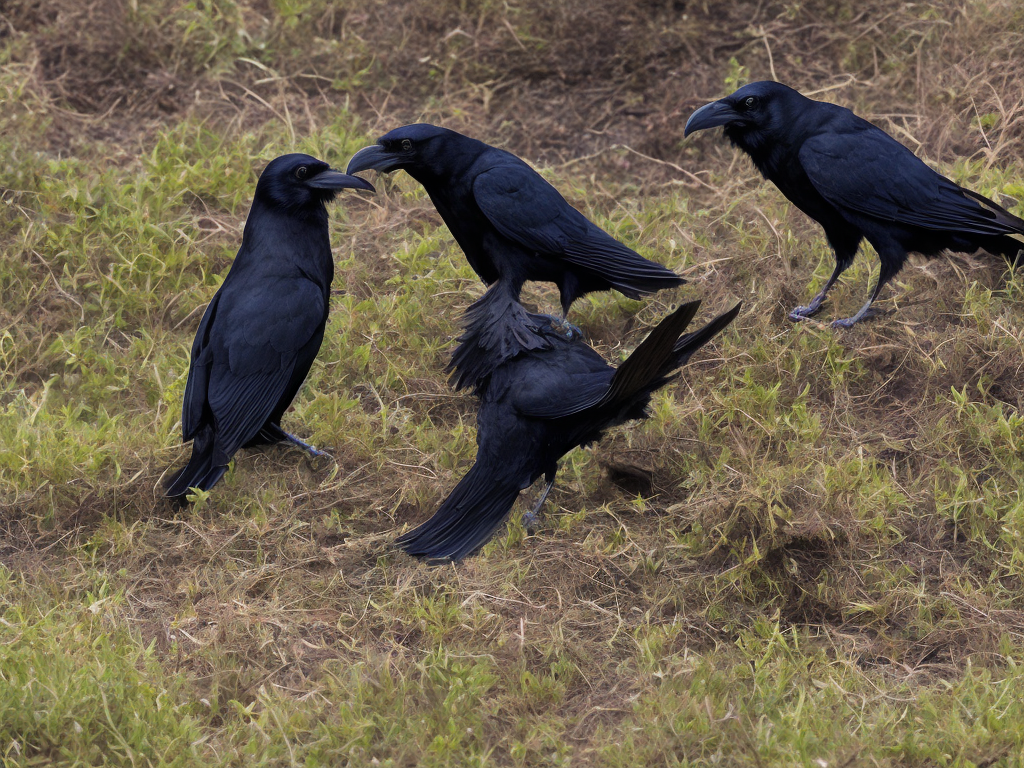
Black birds can be easily confused with one another but there are fundamental differences between the common Raven and the American Crow. Both are handsome black birds with a rich history and symbolism woven into our cultures.
The raven is considered to be one of the most intelligent birds; they have been known to use tools (such as twigs) to obtain food and have exceptional problem-solving skills. Ravens have distinctive large bills and wedge-shaped tails. In flight, ravens exhibit a diamond-shaped tail with a thick, squared-off appearance. Radiating wing feathers are often visible in flight, and their flight pattern seems to alternate between large flaps followed by short glides. Their wingspan can reach over four feet, and they often soar high in the sky, riding the thermals they need for long-distance travel. Another notable feature is the raven's deep and raspy croak, which is an iconic call, often heard in the Dead of Night.
Crows, unlike Ravens, have a relatively small, sharp bill and fan-shaped tails. During flight, they exhibit a more straightforward profile, with shallow wingbeats punctuated by glides. Crows, on the other hand, have a different "caw" rather than a croak. Their voice is still distinctive but moves quicker in the patter. The wingspan of a crow is much lower, reaching up to three feet, and they are more likely to fly in groups during migration.
Another way to differentiate between the two birds is their size, with the raven being the larger breed. Ravens average around 24-27 inches in length, compared to crows’ average of 17-21 inches. Ravens also have thicker necks, as opposed to crow's slender dimension.
Ravens, while being linked to a good omen in literature, are, historically, considered to be harbingers of death or disaster in many cultures. In some indigenous cultures, this is due to the raven's practice of feeding on carrion, making them scavengers of the earth. As a result, they are often associated with death, battlefields, and war. Ravens can also be found as a significant figure in several myths and stories worldwide, particularly in ancient Nordic cultures. Meanwhile, Americans commonly saw crows in a different light: "One for sorrow, two for joy, three for a girl, four for a boy." As assistance, the crow's intelligence and quick-thinking nature have earned them a place in humanity's cultures. For instance, Native American tribes view crows as having an important role in creation stories, while Greek and Roman mythologies saw them as a symbol of ancient goddesses. Countries such as New Zealand hold crows in high regard because of their loyalty and fearlessness.
Crows and Ravens also differ in their social behaviors. Ravens are usually solitary birds, while crows have an intricate social system among their family groups or clans. Crow pairs mate for life, and families also stay together until the young leave the nest. Ravens, on the other hand, have more complex mating patterns, and they are more territorial, with varying degrees of political organization within their communities.
Like other members of the corvid family, crows and ravens share some physical and behavioral characteristics such as having long lifespan, exceptional intelligence, and resourcefulness. They both are largely black in coloring, have strong beaks, and are omnivorous, but despite similarities, the differences between these two corvids are striking.
While crows and ravens' distinct and unique traits earned them a mythical and historical reputation, one of the most significant differences between the two lies in their sounds. It can be hard to differentiate between a raven and a crow because of their similar looks, but by listening closely to their calls, you can tell them often apart.
In conclusion, while looking at these two-black birds from afar, they may seem indistinguishable. However, upon further inspection, we can see that both animals have distinct physical, social, and behavioral differences. Therefore understanding the dissimilarities between these two fascinating creatures can help us appreciate and cohabitate with each of them in their distinctive role in nature.
 Self-Instruct
Self-Instruct